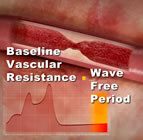
The TCT will be held in Miami Beach, October 22-26, 2012
The Transcatheter Cardiovascular Therapeutics conference (TCT) is the largest U.S. meeting devoted to interventional cardiology (angioplasty, stents, and related procedures) and it starts next week. Organizers are predicting a new attendance record of over 12,000 cardiologists and associated healthcare professionals, as well as members of the device, imaging and pharmaceutical industries, venture capitalists, and press. Speaking of which, yes…I will be there and Angioplasty.Org will be reporting on late-breaking trials, new directions and innovative devices.
The annual meeting is truly international: attendees will be traveling from 70 countries; in fact, this year more than two-thirds of the registrants hail from outside the United States. Continue reading

 Published “online first” today in the New England Journal of Medicine are two articles, authored by the Democratic and Republican presidential nominees, President Barack Obama and former Massachusetts Governor Mitt Romney, describing their health care platforms and their visions for the future of American health care. The editors of NEJM had asked the nominees for these statements which are brief and concise, summing up the two positions in less than 1,300 words each.
Published “online first” today in the New England Journal of Medicine are two articles, authored by the Democratic and Republican presidential nominees, President Barack Obama and former Massachusetts Governor Mitt Romney, describing their health care platforms and their visions for the future of American health care. The editors of NEJM had asked the nominees for these statements which are brief and concise, summing up the two positions in less than 1,300 words each.


 The question of the day, regarding whether or not to stent a coronary artery, is now being brought to the forefront by the U.S. government in the form of a
The question of the day, regarding whether or not to stent a coronary artery, is now being brought to the forefront by the U.S. government in the form of a 

